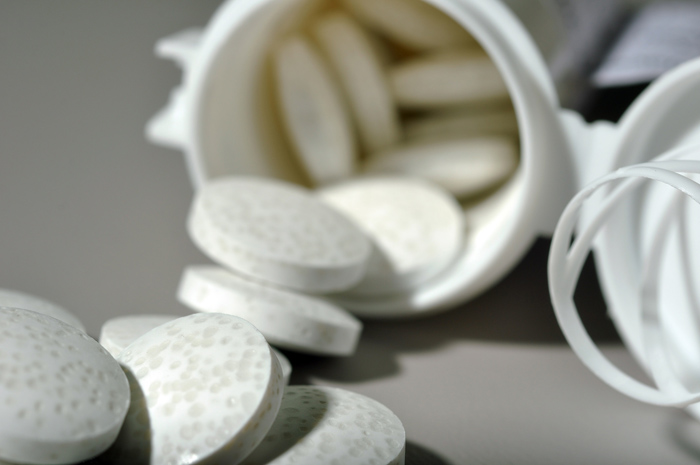Army Developing Anti-Plaque Chewing Gum

A study funded by the U.S. Army Medical Research and Materiel Command is the first of its kind to use a pharmaceutical-grade, anti-plaque chewing gum for humans to test the feasibility of delivering a drug through chewing gum.
The compound, developed by the Dental and Trauma Research Detachment at the U.S. Army Institute of Surgical Research at Joint Base San Antonio-Fort Sam Houston, is known as KSL-W. It is a novel anti-microbial peptide that kills bacteria and is designed to prevent the development of dental plaque and may reduce periodontal disease and cavities.
"The initial gum formulation was done with the School of Pharmacy at the University of Kentucky, in collaboration with Dr. Patrick DeLuca (Professor Emeritus)," said Dr. Kia Leung of the USAISR DTRD. "It took three years to characterize the formulation of the gum, the release and stability profiles of the peptide.
"Our oral cavity produces antimicrobial peptides as part of our innate defense," Lueng said. "We modeled the naturally occurring antimicrobial peptides such as defensins and developed several synthetic peptides [that] exhibited similar or more potent antimicrobial activity. The pharmaceutical active, KSL-W peptide, is one of the more potent molecules showing stability in the oral cavity."
"The peptide is designed to replenish and strengthen the body's innate defense mechanisms in the oral cavity," added DTRD Commander Col. (Dr.) Robert G. Hale. "Oral health is essential to warriors on the battlefield and could potentially save the military countless of hours and dollars in dental health."
There were a few challenges associated with infusing an innocuous item like gum with a pharmaceutical-grade drug, Leung said.
"The first was ensuring adequate release of the peptide within 20 minutes of chewing," Lueng said. "Ideally, we would like to see more than 70 percent of the active ingredient to be release within that time. At present, we have accomplished this level of release using the current gum formulation developed by Fertin Pharma, the manufacturer of the clinical gum used in the trial. We're also concerned about the stability of the peptide in the gum formulations and in saliva."
Getting the gum approved by the Food and Drug Agency will be another major step in the evolution of the anti-plaque gum.
"There would be multiple steps including Phase II and III trials for larger scale of safety and efficacy trials to go through with the FDA," Lueng said. "We are currently conducting a small scale (Phase I) and proof-of-concept efficacy (Phase IIa) trials at the Oral Health Research Institute at Indiana University-Purdue University Indianapolis."
In a year-long clinical study, the OHRI will administer the gum to 137 people between the ages of 18 and 64, focusing on the safety and tolerability of single and multiple doses of the compound. Further studies will be required to determine the extent to which the gum reduces periodontal disease and cavities.
The institute was chosen to administer the clinical study because it is one of the best oral health research institutes in the nation, Lueng said.
"The staff there has a lot of experience performing trial on oral health products," he said. "The selection is through competitive application and selection by the Army Evaluation Board consisting of members from different branches of Medical Research and Materiel Command. The criteria used included technical competence, management, facilities, past performance and others."
"Soldiers in the field just don't spend a lot of time brushing their teeth," said Dr. Domenick T. Zero, OHRI director, professor of preventive and community dentistry and principal investigator of the study.
"The hope is that the gum will reduce the amount of plaque buildup that occurs when soldiers aren't brushing their teeth, reducing the risk of periodontal disease and dental decay."
Will the anti-plaque gum ever make it to the public for general consumption and chewing?
"Because the FDA considers this a new drug entity, it will have to market as prescribed drugs initially prior to becoming over-the-counter after collection of more safety data after human use," Lueng said. "This would be similar to the situation of nicotine gum."














